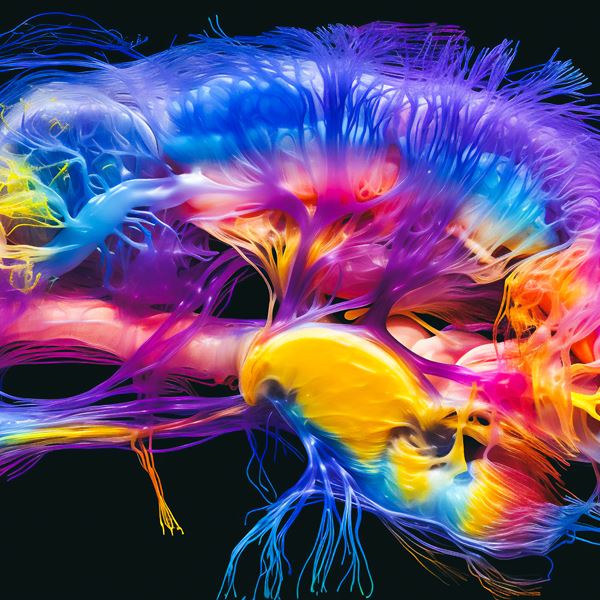
2D-BioPAD
Supple Graphene Bio-Platform for point-of-care early detection and monitoring of Alzheimer’s Disease

2D-BioPAD
A supple graphene bio-platform for point-of-care early detection and monitoring of Alzheimer’s disease
Project Coordinator
Aristeidis Bakandritsos, Palacký University Olomouc, Czech Republic

2D-BioPAD aims to introduce a fast and cost-effective, non-invasive, reliable, digitally and graphene-enabled point-of-care (PoC) in-vitro diagnostics (IVD) system for supporting the early diagnosis and progression monitoring of Alzheimer's Disease directly at primary healthcare settings.
Meeting new challenges
Alzheimer’s disease (AD) is the most prevalent form of dementia,1 affecting more than one in nine people aged 65 and older. The disease is one of the most severe factors driving brain dysfunction in elderly people and is expected to affect roughly 18.8 million people by 2050 in Europe alone2.With an enormous phycological, social and financial burden for healthcare, long-term care and hospice (over $355b just in the US in 2021, without including an additional ~$257B in unpaid caregiving) at a global scale. Perhaps most important of all, the incidence and mortality due to AD keep rising, with an increase of 145.2% from 2000 to 2019, while heart diseases have decreased by 14%. This situation will worsen due to population ageing; life expectancy in Europe is expected to increase by ~10% in 2065 reaching 92.8 years for women and 90.5 years for men3. Absent of a cure, and with current practices targeting the symptoms rather than the cause4, the need for a preventive approach to diagnose as early as possible and get a better insight into the progression of AD is of utmost importance, especially at earlier stages such as mild cognitive impairment (MCI).
An early and accurate Alzheimer's diagnosis would offer significant benefits such as (i) a better chance of benefiting from treatment, (ii) lessening emotional and social burden, (iii) allowing more time and better quality of life, and (iv) saving trillions of Euros in terms of overall costs5. On top of that, emerging promising treatment through novel drugs requires extensive screening to identify the people who are at risk for AD, while aiming to limit adverse effects6. As we speak, such screening processes are too expensive and inaccessible to the public.
2D-BioPAD leverages the unique properties of 2D materials (2DM), such as graphene and its derivatives, and goes beyond the 2DM state-of-the-art to deliver a graphene-based PoC IVD system that will (i) introduce a versatile surface chemistry that combines nano and DNA technologies towards improved biocompatibility, stability, as well as high sensitivity and specificity for enhanced biosensing; (ii) be able to reliably identify and quantify in real-time and simultaneously up to five AD biomarkers in blood samples effectively supporting healthcare professionals in early diagnosis and progression monitoring; (iii) offer an easy to use and understand digital interface with key metrics and insights regarding the measured results; and (iv) employ artificial intelligence (AI) to improve the overall system implementation and drive the next generation of graphene design and implementation.
Sustainable solutions
According to research findings,7 the current healthcare sector contributes negatively to society, in the form of environmental degradation and costs that affect patients and those close to them. Considering that by 2050, almost 20 million individuals will be affected by Alzheimer's in Europe, there is much work that needs to be done to reshape the healthcare sector and its negative impact on the environment and society. To tackle these challenges, the transition from curative medicine towards prevention, pre-care and health promotion,8 is considered one of the most effective approaches. Such strategy also aligns with AD clinical research findings that support early diagnosis and prevention as the only effective countermeasures for delaying progression, providing access to new medication and eventually improving quality of life.
Towards that direction, 2D-BioPAD contributes to a greener healthcare digital supply chain by introducing a low-power, advanced, digitalised PoC IVD system, able to cost-effectively support widely accessible early diagnosis and progression monitoring of AD in primary healthcare settings. Through this, we anticipate significant reductions in the burden for patients and the environment compared to current required treatments, by enabling the related healthcare sector to achieve improved outcomes with fewer examinations, less hospitalisation time, delayed disease progression and hence the mitigation of intense clinical support.
Moreover, 2D-BioPAD introduces two additional and important merits towards a greener digital supply chain, that will further improve the European industrial and technology landscape. First, the graphene design envisioned is expected to be CRM-free taking advantage of state-of-the-art developments on graphene and aptamer technologies. Secondly, through its digitalised implementation, it will be able to generate a significant volume of (paperless) data on several biomarkers, enabling a patient-oriented and clinically robust device, catalysing the transformation of the contemporary complex and energy-demanding methods for Alzheimer's Disease diagnosis and monitoring, to a sustainable, POC, minimally invasive and effective hand-held sensor.
New horizons
2D-BioPAD kicked-off its activities in October 2023, and since then has successfully implemented key elements to establish a strong and coherent presence. The project designed a well-defined graphic identity that extends across various promotional materials (i.e., leaflet, poster, banner). The online sphere is also effectively covered with the creation of a website and active social media accounts on platforms such as LinkedIn, Facebook and X (formerly Twitter), whereas a YouTube channel will be launched in March 2024 along with the project’s promotional video.
From a scientific perspective, 2D-BioPAD has geared up with numerous activities starting in January 2024, extending from field research to capture end-users’ needs via interviews and surveys, to preliminary (co-)design activities for its technical components and the clinical pilot studies. These are also the core challenges that the project will be addressing over the next nine months, aiming to finalise preliminary designs and delve deeper into the implementation of the 2D-BioPAD system.
Collaborations
The 2D-BioPAD project has established a strong collaboration with the Graphene Flagship community through active participation in joint meetings and undertaking the role of co-organiser of Graphene Week 2024 in Prague.
Wider promotion, visibility and outreach are key benefits that are already showing results, with the online social media interaction between 2D-BioPAD and the Graphene Flagship being frequent and productive. As the project progresses, other aspects such as industrialisation and standardisation will also be explored, to maximise the outcomes of the project.
Having initiated synergies with both the Graphene Flagship and other biomedical-oriented projects and initiatives, such as the sister project MUNASET, 2D-BioPAD expects to contribute via tangible actions and activities for promoting graphene biomedical research and innovation within and beyond the Graphene Flagship ecosystem.
Partners
Palacký University Olomouc, Czech Republic
Q-Plan International Advisors PC, Greece
Catalan Institute of Science and Nanotechnology, Spain
Grapheal, France
Aristotle University of Thessaloniki, Greece
Novaptech, France
University of Eastern Finland, Finland
Greek Association of Alzheimer's Disease and Related Disorders, Greece
Envia, Denmark
Central Institute of Mental Health in Manheim, Germany
University College Dublin/National University of Ireland, Ireland
Related articles


MUNASET: A new Horizon Europe project kicked off
Proteases recently emerged as a promising new class of biomarkers with a broad diagnostic, prognostic and therapeutic potential for different human diseases including neurological and psychiatric diseases, several types of cancer and immune system disorders. However, there is a lack of tools for real-time activity analysis of disease-related protease biomarkers.

2D-BioPAD: A new Horizon Europe project kicked off!
With a nearly €6 million budget, 2D-BioPAD will develop a diagnostic system for early Alzheimer's disease detection. This Horizon Europe Research and Innovation Action funded by the European Union, officially commenced on October 2023 and will last 48 months.

